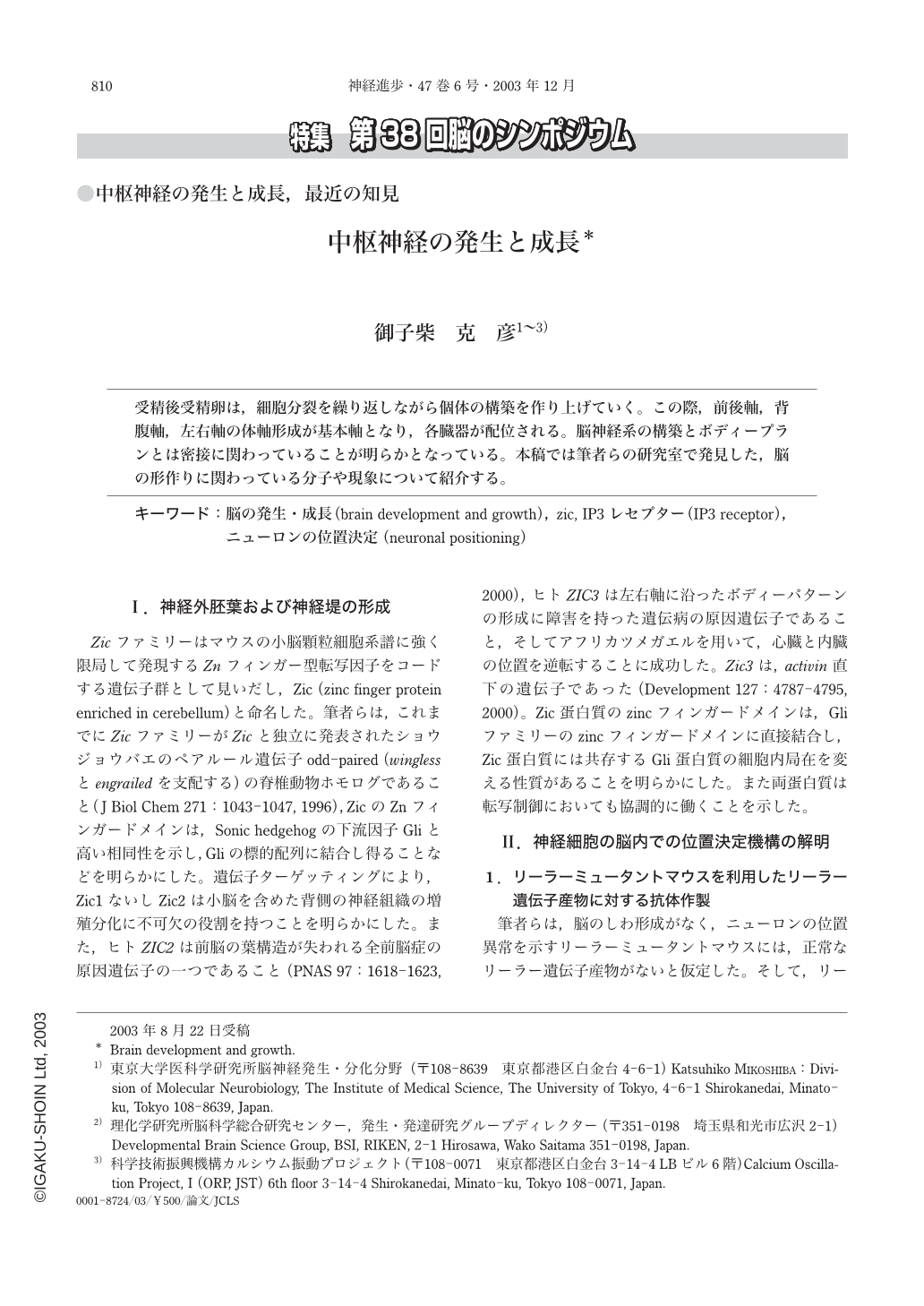Japanese
English
- 有料閲覧
- Abstract 文献概要
- 1ページ目 Look Inside
受精後受精卵は,細胞分裂を繰り返しながら個体の構築を作り上げていく。この際,前後軸,背腹軸,左右軸の体軸形成が基本軸となり,各臓器が配位される。脳神経系の構築とボディープランとは密接に関わっていることが明らかとなっている。本稿では筆者らの研究室で発見した,脳の形作りに関わっている分子や現象について紹介する。
In order to elucidate the molecular basis of higher brain function, it is essential to know how the complicated structures of brains are formed. The brains are formed in a series of critical developmental process, i.e. the fertilization, generation of the neuroectoderm, regional specification of the neural plate, arrangement of neural cells in a laminar fashion, formation and maturation of the neural circuits. We are trying to deal with these phenomena systematically. Our goal is to understand the mechanisms underlying generation of the diversity and the specificity which are characteristic features of the nervous system by revealing the structure and function of the molecules which play important roles in these developmental processes as well as adult stage.
Cerebellum plays an important role in coordinated motor movement, and the cerebellum is composed of relatively limited types of neurons and glial cells. These cells exhibit a very unique developmental process to produce a beautifully aligned cell layers with nicely arranged folia. Since cerebellum is isolated from other part of the brain, it is relatively easy to study the developmental process and also its functional activities by introducing multi disciplinary techniques of molecular and cellular biology, electrophysiology, histology and biophysics. Although cerebellum has unique property in morphology and function, the principle obtained from the cerebellum could be applied to whole brain. There are varieties of cerebellar mutant mice which show abnormalities in morphology and behavior. Studies on the mutants comparing with those of the control give us great information on the molecular events occuring during development and during functional activities.
The work now going in my laboratory is based on the findings after the analysis of cerebellar mutant mice:1)From the studies of Purkinje cell deficient mice and the mutant which show poor dendrites with no spines, we discovered that P400 protein enriched in the Purkinje cell is IP3receptor. IP3receptor is now found to play a crucial role in development and higher brain function. 2)We also found a new gene which was highly expressed in cerebellar granule cells. We named the gene Zic since it is a zinc finger protein enriched in the cerebellum. Zic family is now found to work in neural induction and regional specification. 3)Reelermutant mice are characterized with abnormal neuronal positioning and loss of folium formation. Study of thereelermutant mice gave us great information on the molecular mechanisms of the morphogenesis of the cerebellum. We succeeded in raising the antibody againstreelergene product. We further succeeded in finding a new mutantyotarimice which have a mutation indisabled-1gene. All the works in my laboratory are derived from these three main findings.
We are focusing to clarify the roles of these molecules, by means of laser inactivation of the target molecules, gene delivery mediated by adenoviral vectors and genetic manipulation of mice. On the basis of the mechanisms which we may reveal, we will search for the additional molecules involved in each process and examine the relationship among them. We hope that these studies result in the comprehensive explanation of the developing brain.

Copyright © 2003, Igaku-Shoin Ltd. All rights reserved.


